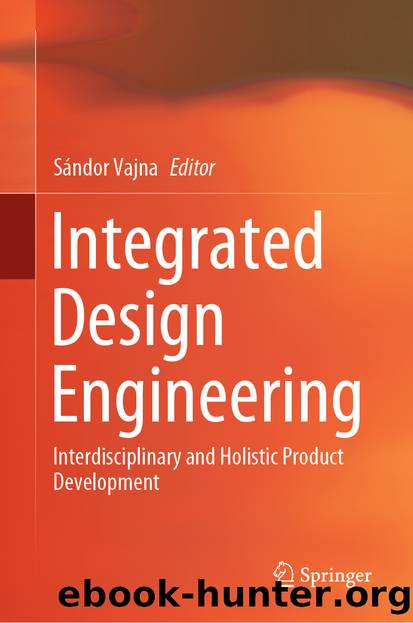Integrated Design Engineering by Unknown

Author:Unknown
Language: eng
Format: epub
ISBN: 9783030193577
Publisher: Springer International Publishing
The distribution parameter (the third parameter, therefore three-parametric distribution) describes the so-called failure-free time in the three-parametric form of the Weibull distribution, i.e. a time span in which the probability of failure is exactly 0%. For the two-parameter form of the Weibull distribution, the following applies . With the use of a failure-free time, more and more optimistic results are achieved, because by definition, no failures occur until the failure-free time is reached, whereas with the two-parameter form, there is a probability of observing failures right from the start—albeit a very small one. For this reason, some aspects should be considered when using the three-parametric form of the Weibull distribution. In addition to the statistically better approximation, there should be a physically valid justification for the existence of a time without failures in order to substantiate its real existence. An example of this is the course of wear on a brake pad. No matter how hard the driver brakes the vehicle, he will not be able to completely wear the brake pad immediately after the first braking manoeuvre, but it will take a few cycles before wear-out occurs. In such a case, the existence of a failure-free time can be assumed, because it is physically not possible that wear occurs directly at the beginning of use. It should also be noted that large sample sizes are always required for the verification of failure-free time.
The probability of failure is calculated as the counterpart of reliability from . The total of intact and failed products of a produced population is always 100%. The density function is the derivation of the failure probability and thus representative of the failure frequency at a certain point in time. As a result, the probability of failure describes the cumulative frequency of all failures up to a certain point in time, which usually forms the design objective in development and thus underlines the central importance of this variable from the point of view of reliability engineering. The failure rate can be described as failure risk by referring the currently occurring failures to the still intact units in the field. It can therefore be interpreted as the probability of observing a failure in the next time interval dt. When the failure rate is applied over time, a so-called bathtub curve is formed, which is divided into three areas by the separation of the failure modes described above and thus represents the flexibility of the Weibull distribution, Fig. 13.4.
Fig. 13.4Bathtub curve as classification of the various failure mechanisms
Download
This site does not store any files on its server. We only index and link to content provided by other sites. Please contact the content providers to delete copyright contents if any and email us, we'll remove relevant links or contents immediately.
| Automotive | Engineering |
| Transportation |
Whiskies Galore by Ian Buxton(41529)
Introduction to Aircraft Design (Cambridge Aerospace Series) by John P. Fielding(32888)
Small Unmanned Fixed-wing Aircraft Design by Andrew J. Keane Andras Sobester James P. Scanlan & András Sóbester & James P. Scanlan(32573)
Craft Beer for the Homebrewer by Michael Agnew(17933)
Turbulence by E. J. Noyes(7700)
The Complete Stick Figure Physics Tutorials by Allen Sarah(7137)
Kaplan MCAT General Chemistry Review by Kaplan(6595)
The Thirst by Nesbo Jo(6435)
Bad Blood by John Carreyrou(6274)
Modelling of Convective Heat and Mass Transfer in Rotating Flows by Igor V. Shevchuk(6222)
Learning SQL by Alan Beaulieu(6035)
Weapons of Math Destruction by Cathy O'Neil(5828)
Man-made Catastrophes and Risk Information Concealment by Dmitry Chernov & Didier Sornette(5646)
Digital Minimalism by Cal Newport;(5389)
Life 3.0: Being Human in the Age of Artificial Intelligence by Tegmark Max(5184)
iGen by Jean M. Twenge(5161)
Secrets of Antigravity Propulsion: Tesla, UFOs, and Classified Aerospace Technology by Ph.D. Paul A. Laviolette(4990)
Design of Trajectory Optimization Approach for Space Maneuver Vehicle Skip Entry Problems by Runqi Chai & Al Savvaris & Antonios Tsourdos & Senchun Chai(4839)
Electronic Devices & Circuits by Jacob Millman & Christos C. Halkias(4747)
